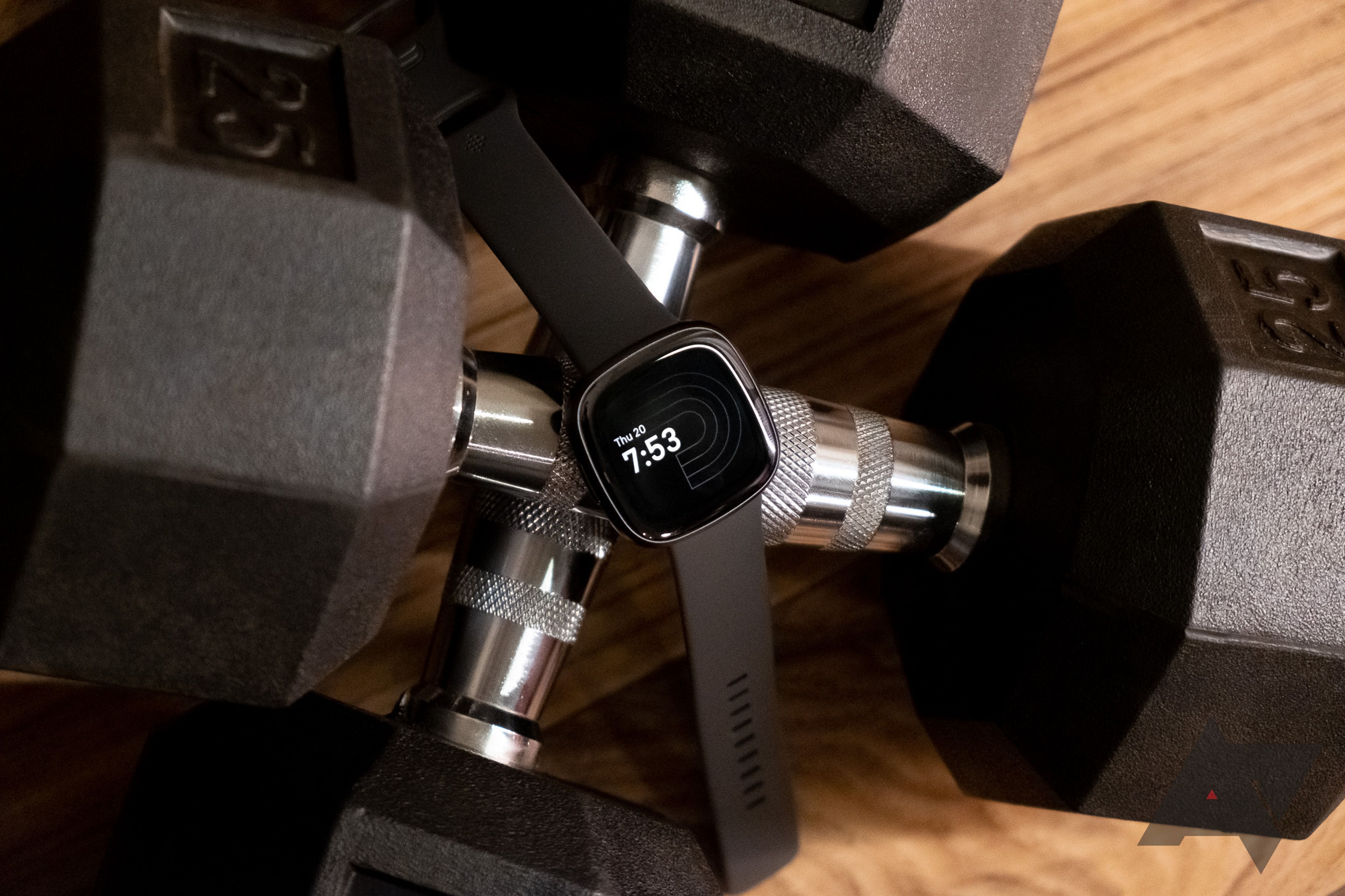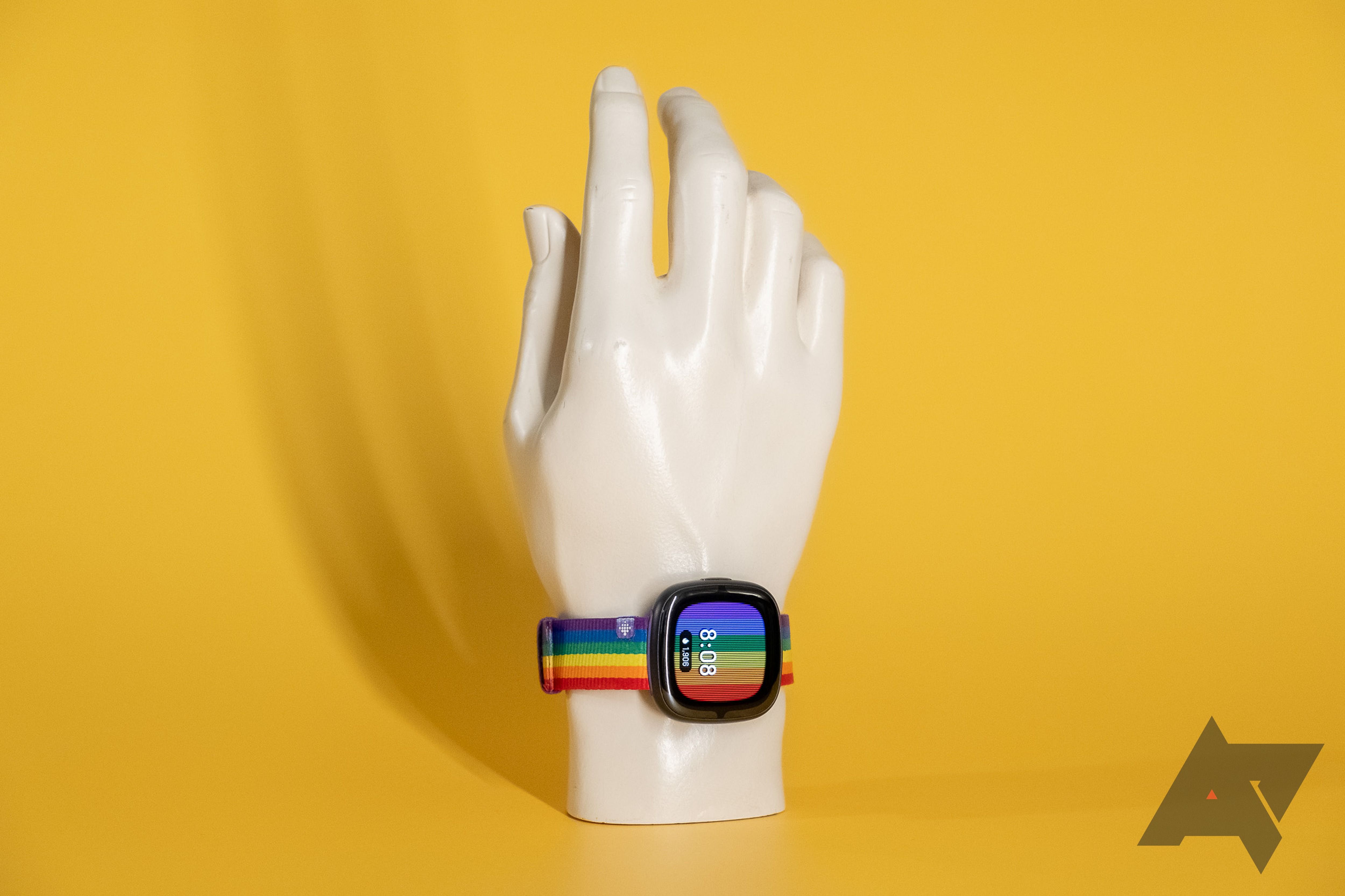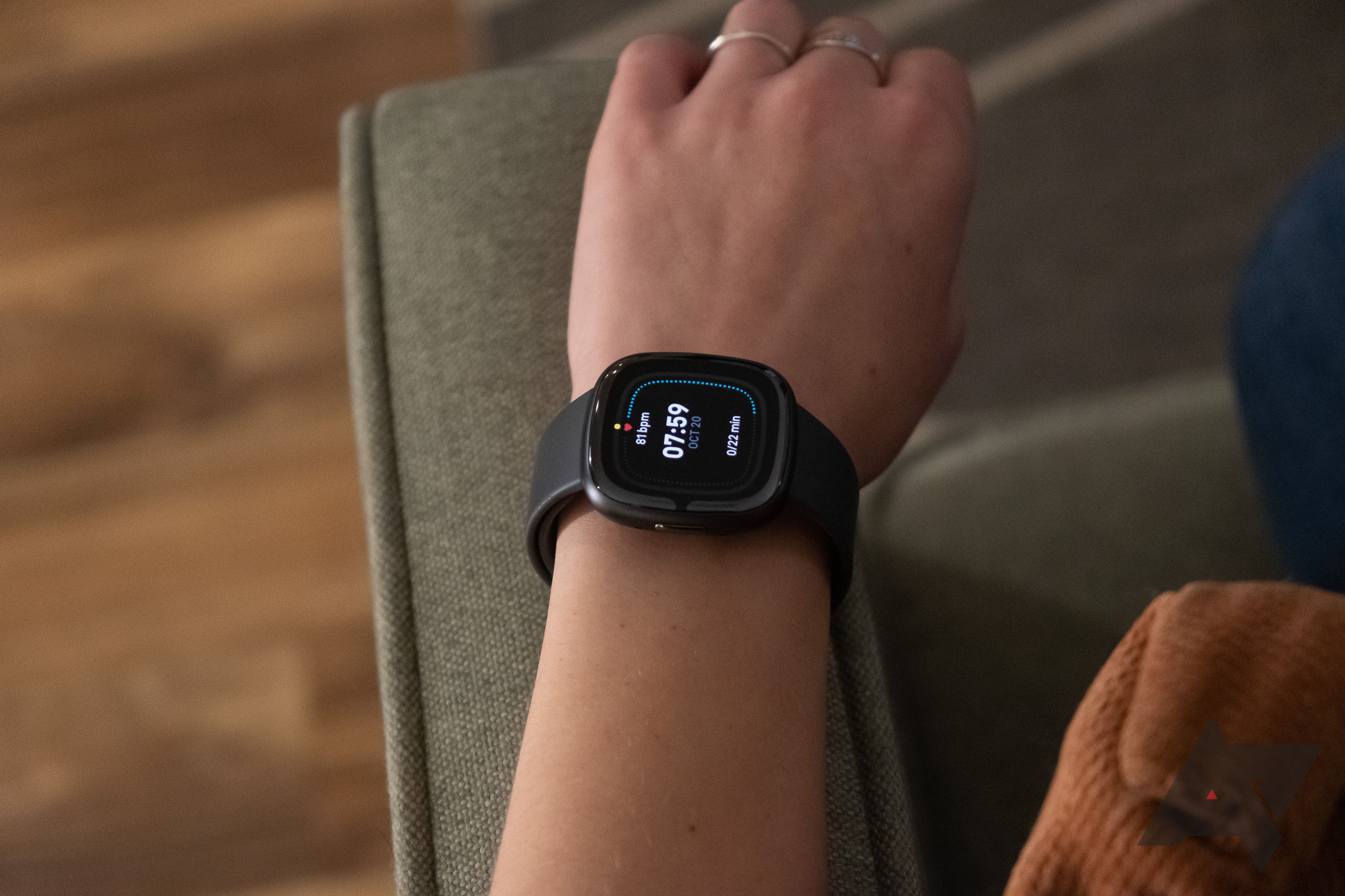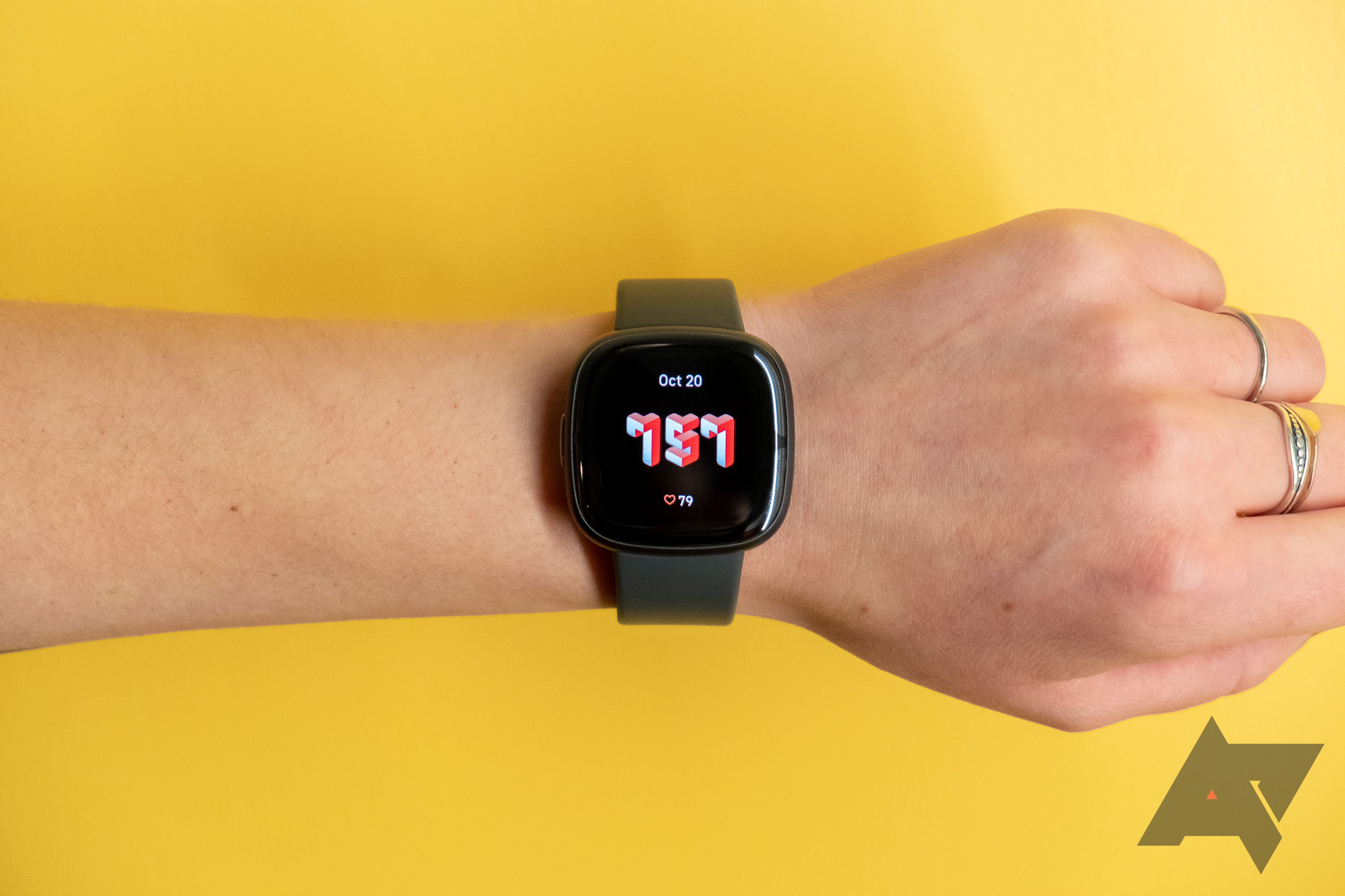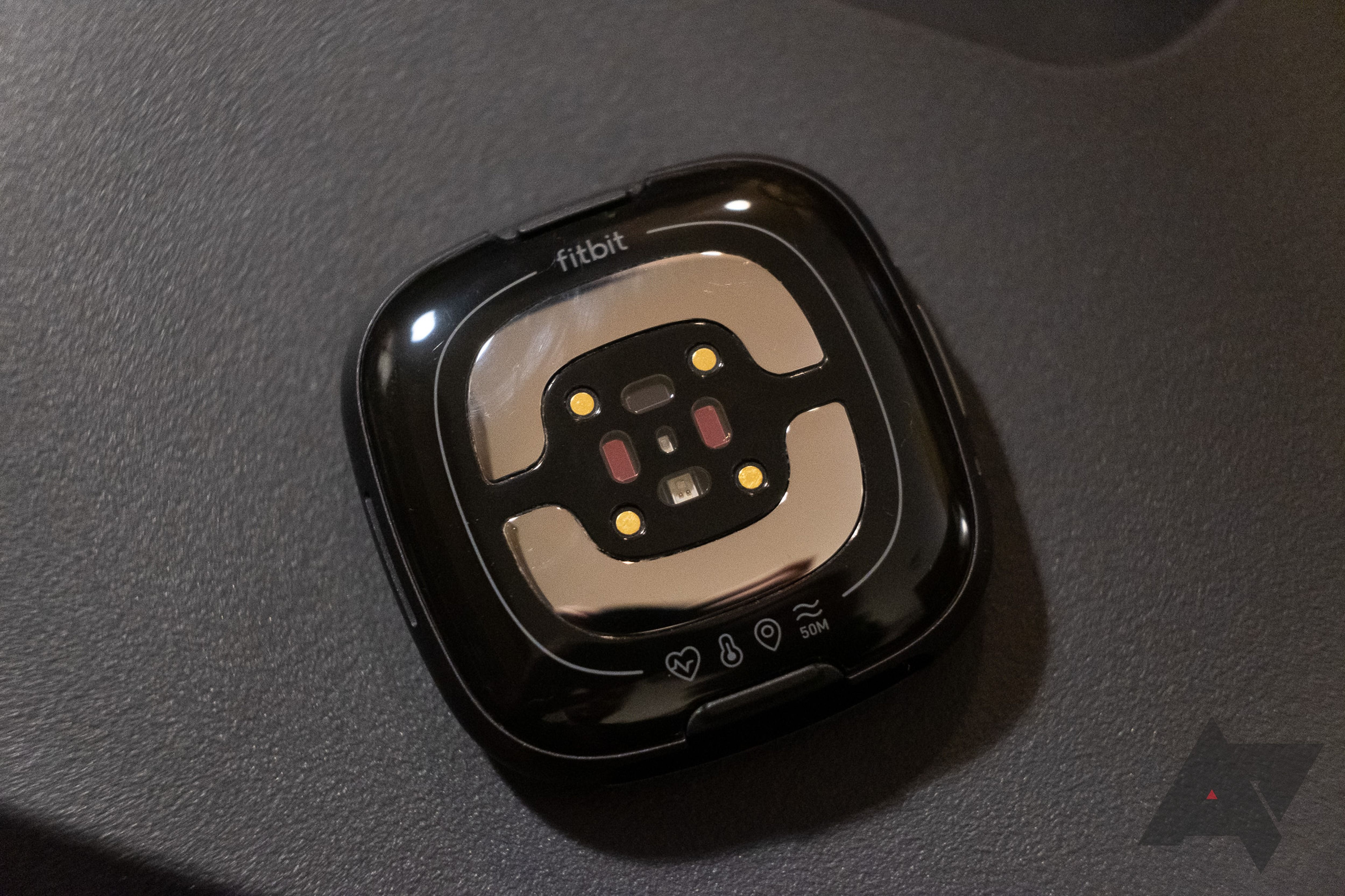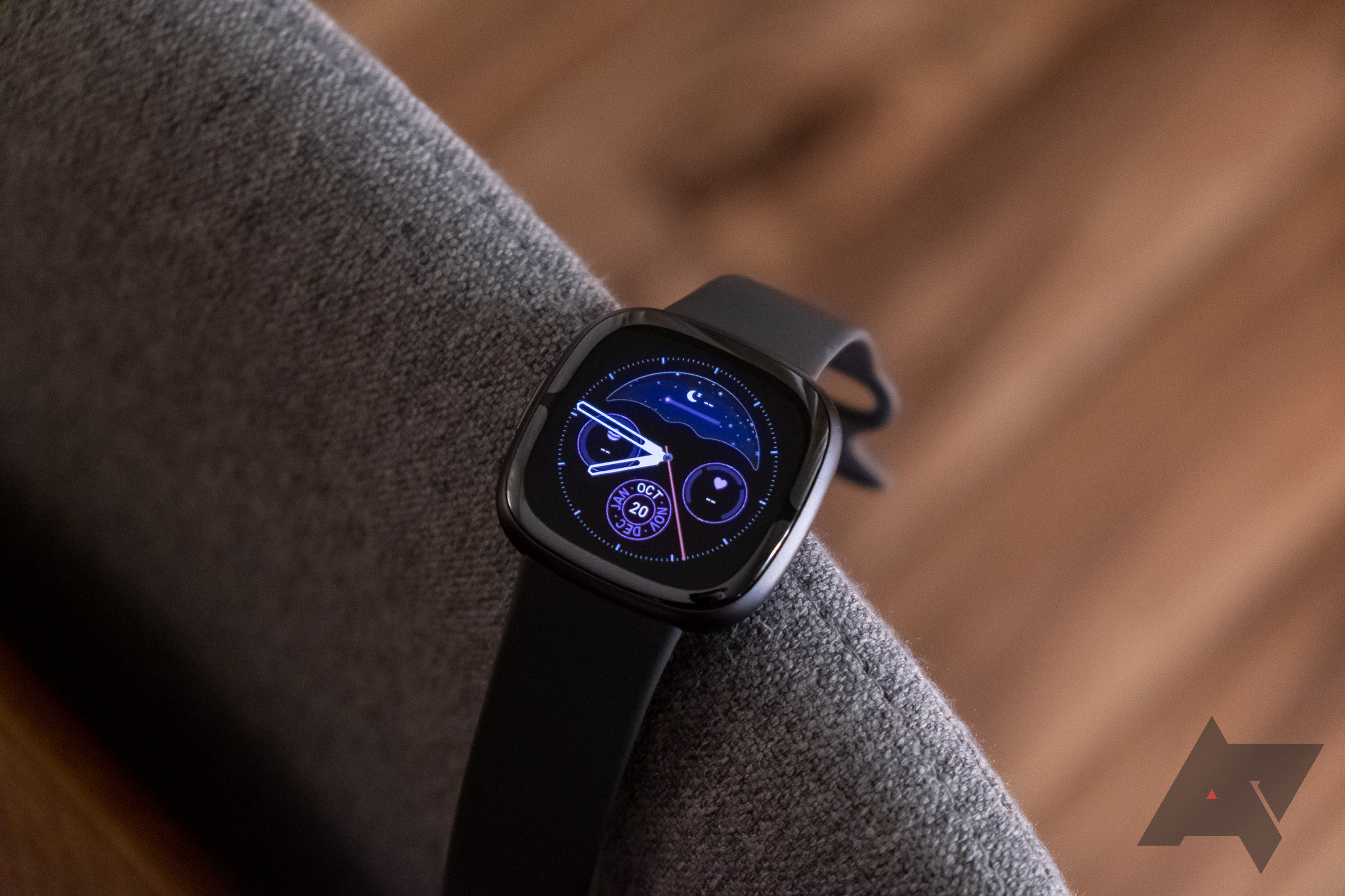Fitbit’s more feature-rich fitness trackers are in a weird spot right now. With Google’s Pixel Watch sporting Fitbit integration, the prospect of a high-end Fitbit wearable with more limited software is starting to feel a little dubious.
The Fitbit Sense 2 tries to justify its premium $300 price tag with a great set of health tracking features and battery life that can stretch to a full week. Still, stiff competition and downgrades from the previous generation make it a questionable value.
Fitbit Sense 2
The Fitbit Sense 2 comes with precious few upgrades from the previous generation, including continuous EDA monitoring and the ability to take ECG measurements. But downgrades like the loss of the Google Assistant and the move to an aluminum case from a stainless steel one make it a tough sell at an MSRP of $300.
- Heart Rate Monitor: Yes
- Color Screen: Yes
- Notification Support: Yes
- Battery Life: 6+ days (3+ days with AOD on)
- Display: 1.6" 336 x 336 OLED
- Health sensors: Heart rate, skin temperature, cEDA, ECG, SpO2, built-in GPS
- IP rating: 50m
- Dimensions: 40.5 x 40.5 x 11.2mm
- Colors: Graphite, Platinum, Soft Gold
- Price: $300
- Mobile payments: Fitbit Pay (Google Wallet coming eventually)
- Workout detection: Yes
- Exercise modes: 40
- Full-featured health tracking
- Handsome design
- Battery can last a week with light use
- No Google Assistant; Google Maps and Google Wallet missing at launch
- First Fitbit Sense was stainless steel, this one's aluminum
- No music functionality
Fitbit Sense 2: Design, hardware, and what's in the box
The Fitbit Sense 2 looks just about like the last Fitbit Sense; it's a "squircle" shape with an OLED display in the middle, flanked by chunky bezels. There are a couple of notable differences, though. For one, the "solid-state button" on the original Sense and Versa 3 is gone, replaced by a regular button. I didn't mind the pressure-sensitive version the last generation used, but a normal button is definitely simpler to interact with.
There are also new sensors on the watch's face for taking ECG measurements. The sensors are gray and don't draw much attention against the screen's black bezel. I actually kind of like how nicely the metallic strips frame the screen. (Strangely, trackers sent out for review cannot take ECG measurements yet, but I'm told watches bought at retail can.)
My review unit is the Graphite aluminum colorway, but the Sense 2 is also available in Platinum and Soft Gold finishes.
I'm slightly annoyed with the move from the original Sense's stainless steel case to this model's aluminum one. Functionally, the case hardly matters, but steel is more durable and weightier than aluminum, so the change is another downgrade. In addition, materials were one of the biggest differentiators between the first Fitbit Sense and the Fitbit Versa 3, so switching to aluminum across the board makes the decision between the two new trackers all the more complicated.
The Sense 2 has sensors on its underside to measure heart rate, skin temperature, electrodermal activity (EDA), and blood oxygen (SpO2). The EDA sensor here is an upgrade from the previous generation. While the original Sense could only measure EDA on-demand, the Sense 2 measures it continuously (you might see the new sensor referred to as a "cEDA" sensor, the c standing for continuous).
The EDA sensor here is an upgrade from the previous generation.
The Fitbit Sense 2's straps attach with the same proprietary connector as in the last model (and the Versa). It's not as slick as the camera-lens-inspired connector Google stuck in the Pixel Watch, but it's simpler to use. To remove a band, pinch the tab where the band meets the watch and then pull. To put a new band on, you just shove the band into the slot, and it clicks into place.
I find the Sense 2 very comfortable. It's thin and light enough to not be distracting on my wrist, and its rounded edges don't easily get caught on my sleeves. Its domed underside seems to maintain good contact with my skin, and the sensors don't often fail to get a reading. People with larger wrists might wish the display were a little bigger, but as someone whose wrists are a bit too large to use Fitbit's small-size default band, I think it's just right.
The Sense 2 comes with small and large bands in the box, plus some literature and a proprietary magnetic charger. I don't love the charger, as it only connects to the Sense 2 if it's lined up correctly; I somehow always try to put it on upside down before getting it right.
Fitbit Sense 2: Software, performance, and battery life
Despite being Google products, Fitbit's watches still don't run Wear OS. But on the surface, Fitbit's proprietary software is pretty similar. Notifications live below the watch's home screen, accessed with a swipe up. Quick settings are a swipe down, and, like on the Pixel Watch, there are customizable tiles to the left and right. You can choose which tiles you want to display and in what order from the Fitbit app on your phone.
There's no Google Play Store here, which means you can't install apps that you might be used to installing from Android-powered wearables. Not having a Play Store is not unusual for a fitness tracker, but, oddly, there's no support for Google Assistant on the Sense 2, even though the support was available on the first-gen Fitbit Sense and the Fitbit Versa 3. Amazon's Alexa is pre-installed instead of Google Assistant. I typically don't want to talk to my watch, so that's just as well for me — but it's hard not to see this lack of support as another downgrade from the previous generation.
It feels like these software limitations are meant to steer prospective Sense 2 buyers toward Google’s pricier Pixel Watch.
Google says that Maps and Wallet are coming to the Sense 2 and Versa 4, but as of right now, they're still not here. Instead, you'll have to rely on Fitbit Pay for contactless payments, and there isn't any on-wrist navigation at all. You also can't download music to the Sense 2 to listen to without your phone — there aren't any music apps. Call me cynical, but it feels like all these software limitations are meant to steer prospective Sense 2 buyers toward Google's pricier Pixel Watch, which, despite its flaws, doesn't have any of these particular problems.
What is here works well, at least. The Sense 2 is easy to use, and everything you can do on it, such as swiping around home screens, opening apps, and talking to Alexa, is quick and painless. By virtue of being a simpler device than a full smartwatch, the Sense 2 also has killer battery life. I've been using mine with the always-on display (AOD) active, and I've only had to charge it every three days or so.
If you opt not to use AOD, the Sense 2 can potentially make it a whole week between top-ups. Coming from any smartwatch you have to charge every day or two, this kind of battery life feels freeing. You can take the Sense 2 on a weekend trip and leave its charger at home. That rules.
Fitbit Sense 2: Health tracking and Fitbit Premium
Fitness is, obviously, front and center in any Fitbit product, and the Sense 2 is no different. It can track 40 types of exercise, and it'll buzz your wrist when it thinks you're up to some physical activity, prompting you to start tracking. (It still logs your steps, heart rate, and estimated calorie burn when you're not actively recording a workout, but it can't tell you're doing, for example, core training unless you tell it as much.)
Fitbit classifies your activity into different "zones" based on how elevated your heart rate is over your baseline: fat burn, cardio, and peak. Each minute you spend in the fat burn range earns you one Zone Minute; each minute in cardio or peak nets you two Zone Minutes.
I really like this as a metric for physical activity. It's a smaller, more digestible number than calories burned — and since not all exercise involves walking or running, it's more of a complete measurement of effort than steps. You can set daily and weekly Zone Minute goals, and many of the Sense 2's watch faces (or clocks, as Fitbit calls them) can be configured to put your Zone Minutes front and center.
The Sense 2 also monitors your sleep, giving you a score out of 100 for each night. The score is based on a combination of how long you slept, how much of that time Fitbit thinks was deep sleep, your heart rate, and how much you tossed and turned. I don't know if I'll ever believe information like this is valuable to most people, as I know when I've slept poorly, but the scores seem to align roughly with my experience. For example, nights I feel I slept soundly tend to get high scores, and restless nights generate lower scores.
While you're sleeping, the Sense 2 tracks your SpO2 levels and skin temperature. Abnormally low blood oxygen numbers can help alert you to potential breathing problems, and skin temperature variability can be used to help track menstrual cycles and predict periods more accurately. Based on SpO2 levels and your temp, Fitbit can also alert you to a fever, but as far as I can tell, the Fitbit app doesn't have any built-in fever-related functionality.
Continuous EDA monitoring has been an unexpected highlight for me in the Sense 2. Electrodermal activity sensing measures your skin's electrical activity; from that, Fitbit extrapolates how stressed you are. On its face, it sounds like a pseudoscientific gimmick, and I don't put much stock in any of the numbers Fitbit generates around stress. (For the record: I'm at 72/100 for stress management today. That I'm currently getting a C in stress management does cause me mild additional stress.)
But while the original Sense could only take these measurements on demand, the Sense 2's cEDA sensor does it automatically in the background. As a result, the tracker can send periodic mood check-ins when it detects changes in your electrodermal activity. Again, I don't feel the EDA itself is particularly meaningful, but being reminded to consider my mood once in a while does seem to help me feel more engaged with what's going on around me.
Continuous EDA monitoring has been an unexpected highlight for me in the Sense 2.
The watch's mood notifications ask how you're feeling, with options like worried and content. The watch also invites you to do a quick breathing exercise when you log your mood and shows your heart rate before and after (my heart rate typically falls over the course of the exercise). It might seem silly, but these check-ins often make me reflect on why I'm feeling happy, stressed, or excited, and I think there's real value in that.
On the subject of value, the Sense 2 comes with six free months of Fitbit Premium, unlocking a handful of features in the Fitbit app. It includes access to recorded studio workouts, a "sleep profile" that illustrates your sleep patterns by assigning you an animal with similar habits, and a daily readiness score that tries to quantify how ready you are for physical activity. None of that really speaks to me, but for Fitbit fanatics, the subscription might be worth keeping. It costs $10 per month once the trial ends.
Fitbit Sense 2: Competition
If you're absolutely married to the idea of getting a new Fitbit tracker with as many features as possible, the Sense 2 is your best bet. But other Fitbit wearables like the Fitbit Charge 5 (typically available for about $120 lately) and the Inspire 3 ($100 at retail) can do most of what the Sense 2 does. Heck, the Versa 4 costs $70 less than the Sense 2 and has all the same features except ECG testing and cEDA monitoring.
And if you're willing to look beyond Fitbit, you can get a Samsung Galaxy Watch 5 for $280 (or less on sale). It won't last as long on a charge, and it doesn't connect to the Fitbit app. Still, it offers a better day-to-day wearable experience (including access to Google Wallet, Google Maps, Spotify, and more), more watch band options, and a better display, plus pretty robust health tracking of its own via Samsung Health. And if you really want to keep your fitness data in the Fitbit ecosystem, the Wear OS-powered Google Pixel Watch does offer Fitbit integration — but it costs $350, its calorie burn estimates are questionable at best, and it can't track skin temperature or EDA.
Fitbit Sense 2: Should you buy it?
At $300, the Fitbit Sense 2 is more affordable than its predecessor was at launch, but I'm still not sure what you're getting here is worth the asking price. The Sense 2 does track just about every health metric you could ask for in a wearable, and the hardware is excellent. But generation-to-generation downgrades like the loss of Google Assistant functionality and Fitbit's decision to use aluminum rather than steel in the watch's case are disappointing.
They seem meant to nudge shoppers toward the higher-end Pixel Watch. And as much as I like the Sense 2's exclusive cEDA features, the part I enjoy most — reminders to reflect — could easily be replicated with regular reminders on any smartwatch.
The Sense 2 is a fine product in a vacuum, but it doesn't do enough to compete in the increasingly crowded wearable space — especially not for 300 bucks. However, it might be a good buy if you can find one at a substantial discount. Otherwise, I think most people would be better off with a cheaper Fitbit tracker or a good smartwatch.
Buy it if…
- You're a dyed-in-the-wool Fitbit enthusiast who wants the latest and greatest.
- You catch a good sale.
Don't buy it if…
- You don't want features like cEDA monitoring.
- You're willing to charge more often.

